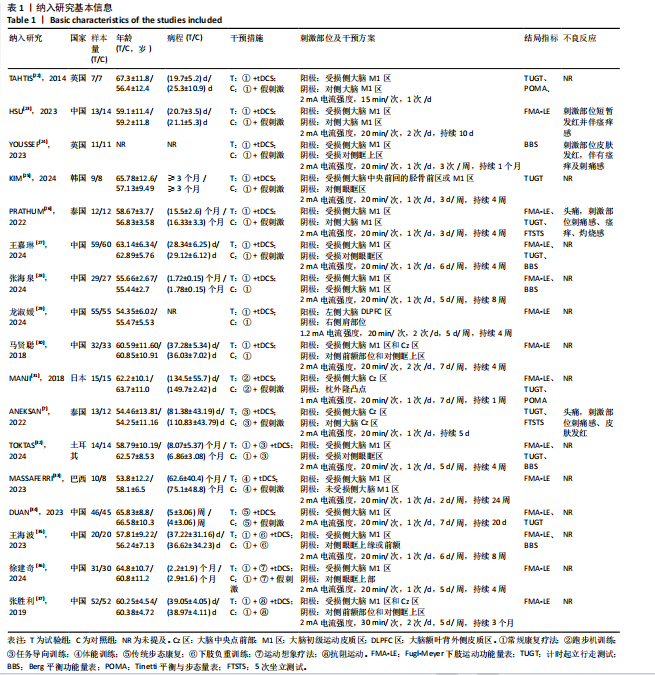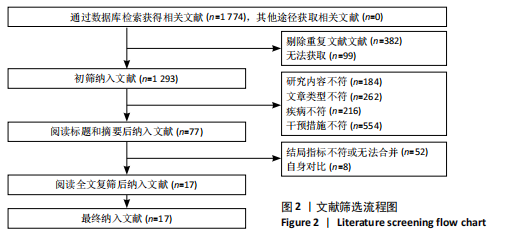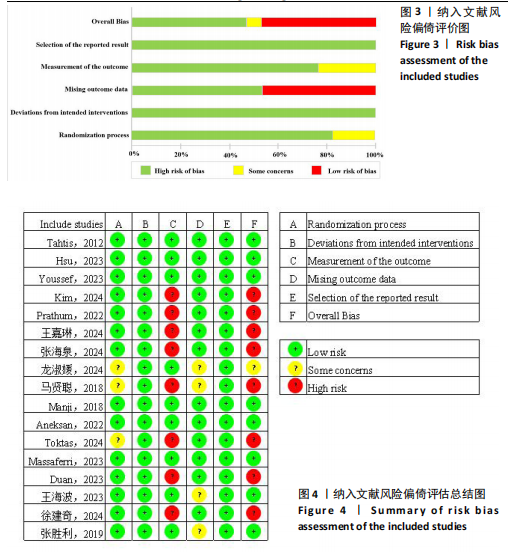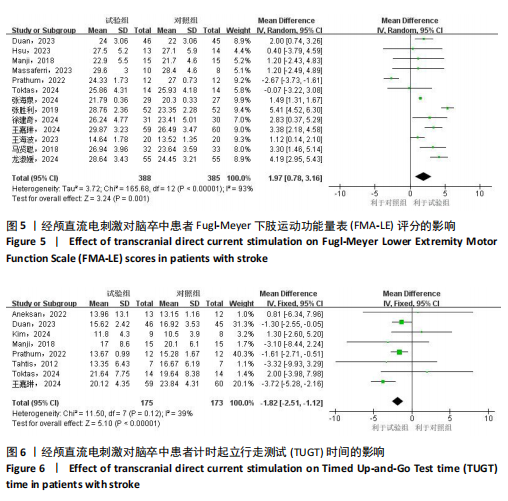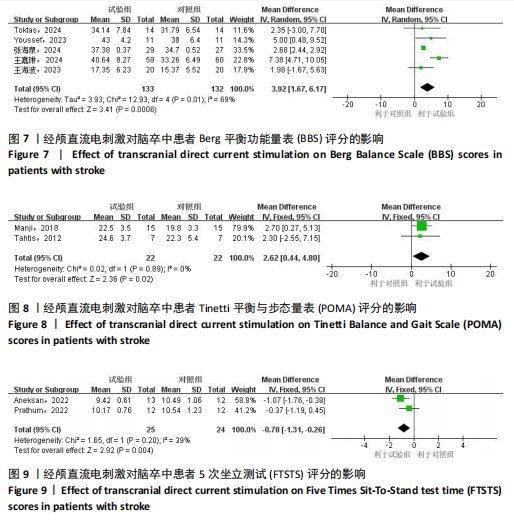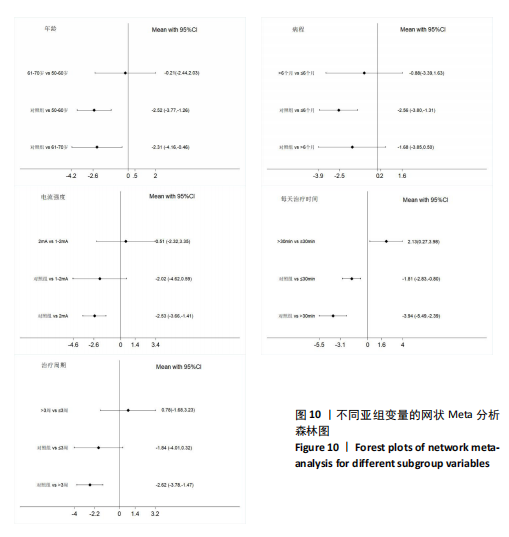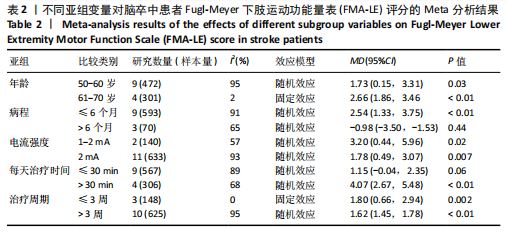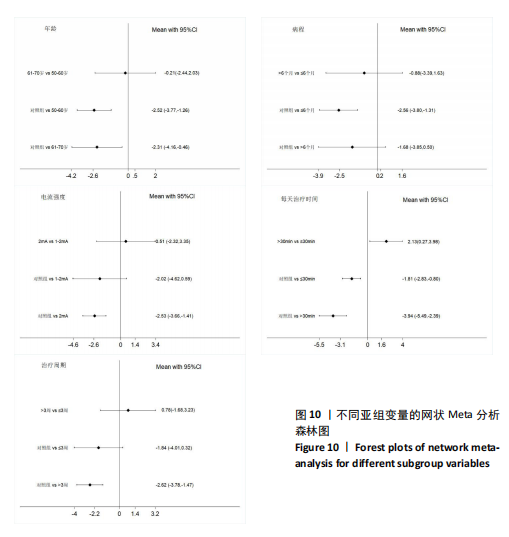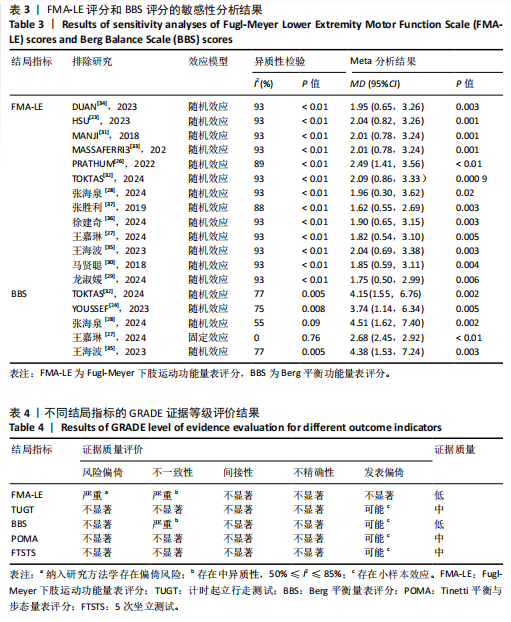[1] NETS TRIAL COLLABORATION GROUP. A multicenter, randomized, double-blind, placebo-controlled trial to test efficacy and safety of transcranial direct current stimulation to the motor cortex after stroke (NETS): study protocol. Neurol Res Pract. 2022;4(1):14.
[2] VELDEMA J, JANSEN P. Resistance training in stroke rehabilitation: systematic review and meta-analysis. Clin Rehabil. 2020;34(9): 1173-1197.
[3] VELDEMA J, JANSEN P. Ergometer Training in Stroke Rehabilitation: Systematic Review and Meta-analysis. Arch Phys Med Rehabil. 2020;101(4):674-689.
[4] QURAT-UL-AIN, AHMAD Z, ILYAS S, et al. Comparison of a single session of tDCS on cerebellum vs. motor cortex in stroke patients: a randomized sham-controlled trial. Ann Med. 2023;55(2):2252439.
[5] BAI X, GUO Z, HE L, et al. Different Therapeutic Effects of Transcranial Direct Current Stimulation on Upper and Lower Limb Recovery of Stroke Patients with Motor Dysfunction: A Meta-Analysis. Neural Plast. 2019;2019:1372138.
[6] FLEMING MK, PAVLOU M, NEWHAM DJ, et al. Non-invasive brain stimulation for the lower limb after stroke: what do we know so far and what should we be doing next? Disabil Rehabil. 2017;39(7):714-720.
[7] ANEKSAN B, SAWATDIPAN M, BOVONSUNTHONCHAI S, et al. Five-Session Dual-Transcranial Direct Current Stimulation With Task-Specific Training Does Not Improve Gait and Lower Limb Performance Over Training Alone in Subacute Stroke: A Pilot Randomized Controlled Trial. Neuromodulation. 2022;25(4):558-568.
[8] PLOW EB, CUNNINGHAM DA, BEALL E, et al. Effectiveness and neural mechanisms associated with tDCS delivered to premotor cortex in stroke rehabilitation: study protocol for a randomized controlled trial. Trials. 2013;14:331.
[9] LOWENTHAL-RAZ J, LIEBERMANN DG, FRIEDMAN J, et al. Kinematic descriptors of arm reaching movement are sensitive to hemisphere-specific immediate neuromodulatory effects of transcranial direct current stimulation post stroke. Sci Rep. 2024;14(1):11971.
[10] TSENG SC, CHERRY D, KO M, et al. The effects of combined transcranial brain stimulation and a 4-week visuomotor stepping training on voluntary step initiation in persons with chronic stroke-a pilot study. Front Neurol. 2024;15:1286856.
[11] DA CUNHA MJ, PINTO C, SCHIFINO GP, et al. Bicephalic Transcranial Direct-Current Stimulation Does Not Add Benefits to a Footdrop Stimulator for Improving Functional Mobility in People With Chronic Hemiparesis After Stroke: A Double-Blind, Randomized Controlled Trial. Phys Ther. 2022;102(8):pzac079.
[12] CHANG MC, KIM DY, PARK DH. Enhancement of Cortical Excitability and Lower Limb Motor Function in Patients With Stroke by Transcranial Direct Current Stimulation. Brain Stimul. 2015;8(3):561-566.
[13] COPPENS MJM, STARING WHA, NONNEKES J, et al. Offline effects of transcranial direct current stimulation on reaction times of lower extremity movements in people after stroke: a pilot cross-over study. J Neuroeng Rehabil. 2019;16(1):136.
[14] GHOSH S, HATHORN D, EISENHAUER J, et al. Anodal Transcranial Direct Current Stimulation over the Vertex Enhances Leg Motor Cortex Excitability Bilaterally. Brain Sci. 2019;9(5):98.
[15] KINDRED JH, KAUTZ SA, WONSETLER EC, et al. Single Sessions of High-Definition Transcranial Direct Current Stimulation Do Not Alter Lower Extremity Biomechanical or Corticomotor Response Variables Post-stroke. Front Neurosci. 2019;13:286.
[16] 中华医学会神经病学分会,中华医学会神经病学分会脑血管病学组.中国各类主要脑血管病诊断要点2019[J].中华神经科杂志,2019,52(9):710-715.
[17] 朱涛,刘津池,刘畅,等.整群随机试验和交叉试验偏倚风险评价工具RoB2.0 (2021修订版)解读[J].中国循证医学杂志,2022,22(7):842-852.
[18] CUMPSTON M, LI T, PAGE MJ, et al. Updated guidance for trusted systematic reviews: a new edition of the Cochrane Handbook for Systematic Reviews of Interventions. Cochrane Database Syst Rev. 2019;10(10):ED000142.
[19] PATSOPOULOS NA, EVANGELOU E, IOANNIDIS JP. Sensitivity of between-study heterogeneity in meta-analysis: proposed metrics and empirical evaluation. Int J Epidemiol. 2008;37(5):1148-1157.
[20] SHIM S, YOON BH, SHIN IS, et al. Network meta-analysis: application and practice using Stata. Epidemiol Health. 2017;39:e2017047.
[21] 陆瑶,杨秋玉,赖鸿皓,等.诊断试验准确性比较研究系统评价的证据分级[J].中国循证医学杂志,2022,22(10):1233-1240.
[22] TAHTIS V, KASKI D, SEEMUNGAL BM. The effect of single session bi-cephalic transcranial direct current stimulation on gait performance in sub-acute stroke: A pilot study. Restor Neurol Neurosci. 2014; 32(4):527-532.
[23] HSU SP, LU CF, LIN BF, et al. Effects of bihemispheric transcranial direct current stimulation on motor recovery in subacute stroke patients: a double-blind, randomized sham-controlled trial. J Neuroeng Rehabil. 2023;20(1):27.
[24] YOUSSEF H, MOHAMED NAE, HAMDY M. Comparison of bihemispheric and unihemispheric M1 transcranial direct current stimulations during physical therapy in subacute stroke patients: A randomized controlled trial. Neurophysiol Clin. 2023; 53(3):102895.
[25] KIM HM, NA JM, JO HS, et al. Feasibility of Simultaneous Anodal Transcranial Direct Current Stimulation During Gait Training in Chronic Stroke Patients: A Randomized Double-Blind Pilot Clinical Trial. J Integr Neurosci. 2024;23(8):154.
[26] PRATHUM T, PIRIYAPRASARTH P, ANEKSAN B, et al. Effects of home-based dual-hemispheric transcranial direct current stimulation combined with exercise on upper and lower limb motor performance in patients with chronic stroke. Disabil Rehabil. 2022;44(15):3868-3879.
[27] 王嘉琳,刘立芝,官艳林,等.经颅直流电刺激联合运动康复训练对脑卒中患者下肢运动功能和血清Hcy水平的影响[J].川北医学院学报,2024,39(1):34-37.
[28] 张海泉,胡川,黄磊,等.高精度经颅直流电刺激联合悬吊运动训练对脑卒中患者下肢运动功能的影响[J].康复学报, 2024,34(2):110-116.
[29] 龙淑媛,叶经香,王桂瑜.左背外侧前额叶阳极经颅直流电刺激联合康复训练对脑卒中后肢体运动障碍患者的心理和运动功能的影响[J].国际精神病学杂志, 2024,51(4):1230-1232+1236.
[30] 马贤聪,鲍晓,杨泉,等.抗阻运动联合经颅直流电刺激对脑卒中偏瘫患者肢体运动功能的影响[J].临床与病理杂志, 2018,38(4):805-811.
[31] MANJI A, AMIMOTO K, MATSUDA T, et al. Effects of transcranial direct current stimulation over the supplementary motor area body weight-supported treadmill gait training in hemiparetic patients after stroke. Neurosci Lett. 2018;662:302-305.
[32] TOKTAS N, DURUTURK N, GÜZEL Ş, et al. The effect of transcranial direct current stimulation on balance, gait function and quality of life in patients with stroke. Neurol Res. 2024;46(9):868-875.
[33] MASSAFERRI R, MONTENEGRO R, DE FREITAS FONSECA G, et al. Multimodal physical training combined with tDCS improves physical fitness components in people after stroke: a double-blind randomized controlled trial. Top Stroke Rehabil. 2023;30(7):635-648.
[34] DUAN Q, LIU W, YANG J, et al. Effect of Cathodal Transcranial Direct Current Stimulation for Lower Limb Subacute Stroke Rehabilitation. Neural Plast. 2023; 2023:1863686.
[35] 王海波,陶媛媛,李静,等.经颅直流电刺激协同患侧下肢强制性负重训练对脑卒中Pusher综合征的效果[J].中国康复理论与实践,2023,29(3):269-274.
[36] 徐建奇,王舒,沈晓艳,等.经颅直流电刺激联合动觉运动想象疗法对恢复期脑卒中患者下肢功能的疗效[J].神经损伤与功能重建,2024,19(6):366-368.
[37] 张胜利.抗阻运动联合经颅直流电刺激治疗对卒中后偏瘫患者肢体功能影响观察[J].齐齐哈尔医学院学报,2019,40(12): 1499-1500.
[38] FULK GD, HE Y, BOYNE P, et al. Predicting Home and Community Walking Activity Poststroke. Stroke. 2017;48(2):406-411.
[39] LONGO V, BARBATI SA, RE A, et al. Transcranial Direct Current Stimulation Enhances Neuroplasticity and Accelerates Motor Recovery in a Stroke Mouse Model. Stroke. 2022;53(5):1746-1758.
[40] GEIGER M, SUPIOT A, ZORY R, et al. The effect of transcranial direct current stimulation (tDCS) on locomotion and balance in patients with chronic stroke: study protocol for a randomised controlled trial. Trials. 2017;18(1):492.
[41] KAMII Y, KOJIMA S, ONISHI H. Transcranial direct current stimulation over the posterior parietal cortex improves visuomotor performance and proprioception in the lower extremities. Front Hum Neurosci. 2022;16:876083.
[42] MITSUTAKE T, SAKAMOTO M, NAKAZONO H, et al. The Effects of Combining Transcranial Direct Current Stimulation and Gait Training with Functional Electrical Stimulation on Trunk Acceleration During Walking in Patients with Subacute Stroke. J Stroke Cerebrovasc Dis. 2021;30(4):105635.
[43] SHEN QR, HU MT, FENG W, et al. Narrative Review of Noninvasive Brain Stimulation in Stroke Rehabilitation. Med Sci Monit. 2022;28:e938298.
[44] MADHAVAN S, CLELAND BT, SIVARAMAKRISHNAN A, et al. Cortical priming strategies for gait training after stroke: a controlled, stratified trial. J Neuroeng Rehabil. 2020;17(1):111.
[45] NAVARRO-LÓPEZ V, MOLINA-RUEDA F, JIMÉNEZ-JIMÉNEZ S, et al. Effects of Transcranial Direct Current Stimulation Combined with Physiotherapy on Gait Pattern, Balance, and Functionality in Stroke Patients. A Systematic Review. Diagnostics (Basel). 2021;11(4):656.
[46] KOO WR, JANG BH, KIM CR. Effects of Anodal Transcranial Direct Current Stimulation on Somatosensory Recovery After Stroke: A Randomized Controlled Trial. Am J Phys Med Rehabil. 2018;97(7):507-513.
[47] KUMARI N, TAYLOR D, OLSEN S, et al. Cerebellar Transcranial Direct Current Stimulation for Motor Learning in People with Chronic Stroke: A Pilot Randomized Controlled Trial. Brain Sci. 2020;10(12):982.
[48] LIMA E, DE SOUZA NETO JMR, ANDRADE SM. Effects of transcranial direct current stimulation on lower limb function, balance and quality of life after stroke: a systematic review and meta-analysis. Neurol Res. 2023;45(9):843-853.
[49] QURAT-UL-AIN, AHMAD Z, ISHTIAQ S, et al. Short term effects of anodal cerebellar vs. anodal cerebral transcranial direct current stimulation in stroke patients, a randomized control trial. Front Neurosci. 2022;16:1035558.
[50] SEAMON BA, BOWDEN MG, KINDRED JH, et al. Transcranial Direct Current Stimulation Electrode Montages May Differentially Impact Variables of Walking Performance in Individuals Poststroke: A Preliminary Study. J Clin Neurophysiol. 2023;40(1):71-78.
[51] VIMOLRATANA O, ANEKSAN B, SIRIPORNPANICH V, et al. Effects of anodal tDCS on resting state eeg power and motor function in acute stroke: a randomized controlled trial. J Neuroeng Rehabil. 2024; 21(1):6.
[52] PAVLOVA EL, SEMENOV RV, GUEKHT AB. Effect of tDCS on Fine Motor Control of Patients in Subacute and Chronic Post-Stroke Stages. J Mot Behav. 2020;52(4): 383-395.
[53] CAO Z, Elkins MR. Stroke rehabilitation. J Physiother. 2024;70(1):5-6.
[54] OJARDIAS E, AZÉ OD, LUNEAU D, et al. The Effects of Anodal Transcranial Direct Current Stimulation on the Walking Performance of Chronic Hemiplegic Patients. Neuromodulation. 2020;23(3):373-379.
[55] PARIKH V, MEDLEY A, CHUNG YC, et al. Optimal timing and neural loci: a scoping review on the effect of non-invasive brain stimulation on post-stroke gait and balance recovery. Top Stroke Rehabil. 2023;30(1): 84-100.
[56] CHHATBAR PY, RAMAKRISHNAN V, KAUTZ S, et al. Transcranial Direct Current Stimulation Post-Stroke Upper Extremity Motor Recovery Studies Exhibit a Dose-Response Relationship. Brain Stimul. 2016;9(1):16-26.
[57] 李宪东,裴轶丰,张楚潍,等.经颅直流电刺激在急性缺血性卒中应用的研究进展[J].中国脑血管病杂志,2023,20(1):41-48.
[58] TAKECHI U, MATSUNAGA K, NAKANISHI R, et al. Longitudinal changes of motor cortical excitability and transcallosal inhibition after subcortical stroke. Clin Neurophysiol. 2014;125(10):2055-2069.
[59] REHME AK, EICKHOFF SB, ROTTSCHY C, et al. Activation likelihood estimation meta-analysis of motor-related neural activity after stroke. Neuroimage. 2012;59(3):2771-2782.
[60] CUYPERS K, LEENUS DJ, VAN DEN BERG FE, et al. Is motor learning mediated by tDCS intensity? PLoS One. 2013;8(6):e67344.
[61] ELSNER B, KUGLER J, POHL M, et al. Transcranial direct current stimulation (tDCS) for improving activities of daily living, and physical and cognitive functioning, in people after stroke. Cochrane Database Syst Rev. 2020;11(11):CD009645.
[62] BRUNONI AR, NITSCHE MA, BOLOGNINI N, et al. Clinical research with transcranial direct current stimulation (tDCS): challenges and future directions. Brain Stimul. 2012; 5(3):175-195.
[63] NUDO RJ. Recovery after brain injury: mechanisms and principles. Front Hum Neurosci. 2013;7:887.
[64] CLARK B, WHITALL J, KWAKKEL G, et al. The effect of time spent in rehabilitation on activity limitation and impairment after stroke. Cochrane Database Syst Rev. 2021;10(10):CD012612.
[65] 赵天芮,张丽华,张赛雅,等.首发脑卒中偏瘫患者主动功能锻炼的现状及干预措施研究进展[J].保健医学研究与实践, 2024,21(6):149-156.
[66] ZHANG Y, QIU X, JIN Q, et al. Influencing factors of home exercise adherence in elderly patients with stroke: A multiperspective qualitative study. Front Psychiatry. 2023;14:1157106.
[67] WULF G. Self-controlled practice enhances motor learning: implications for physiotherapy. Physiotherapy. 2007;93(2):96-101.
[68] KERSTEN P, ELLIS-HILL C, MCPHERSON KM, et al. Beyond the RCT - understanding the relationship between interventions, individuals and outcome - the example of neurological rehabilitation. Disabil Rehabil. 2010;32(12):1028-1034.
[69] JANSSON AB, CARLSSON G. Physical activity on prescription at the time of stroke or transient ischemic attack diagnosis - from a patient perspective. Disabil Rehabil. 2021; 43(8):1121-1128.
|
